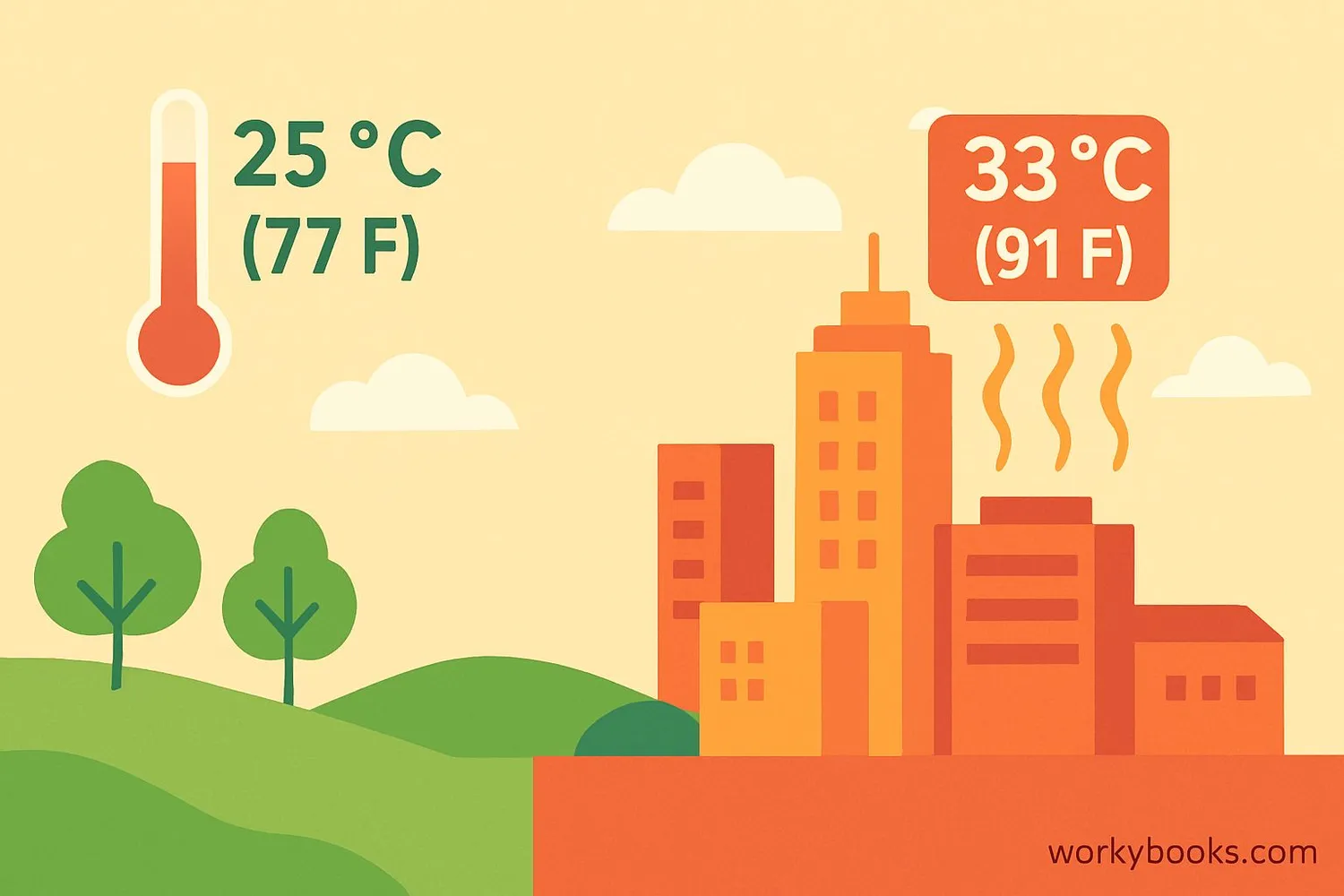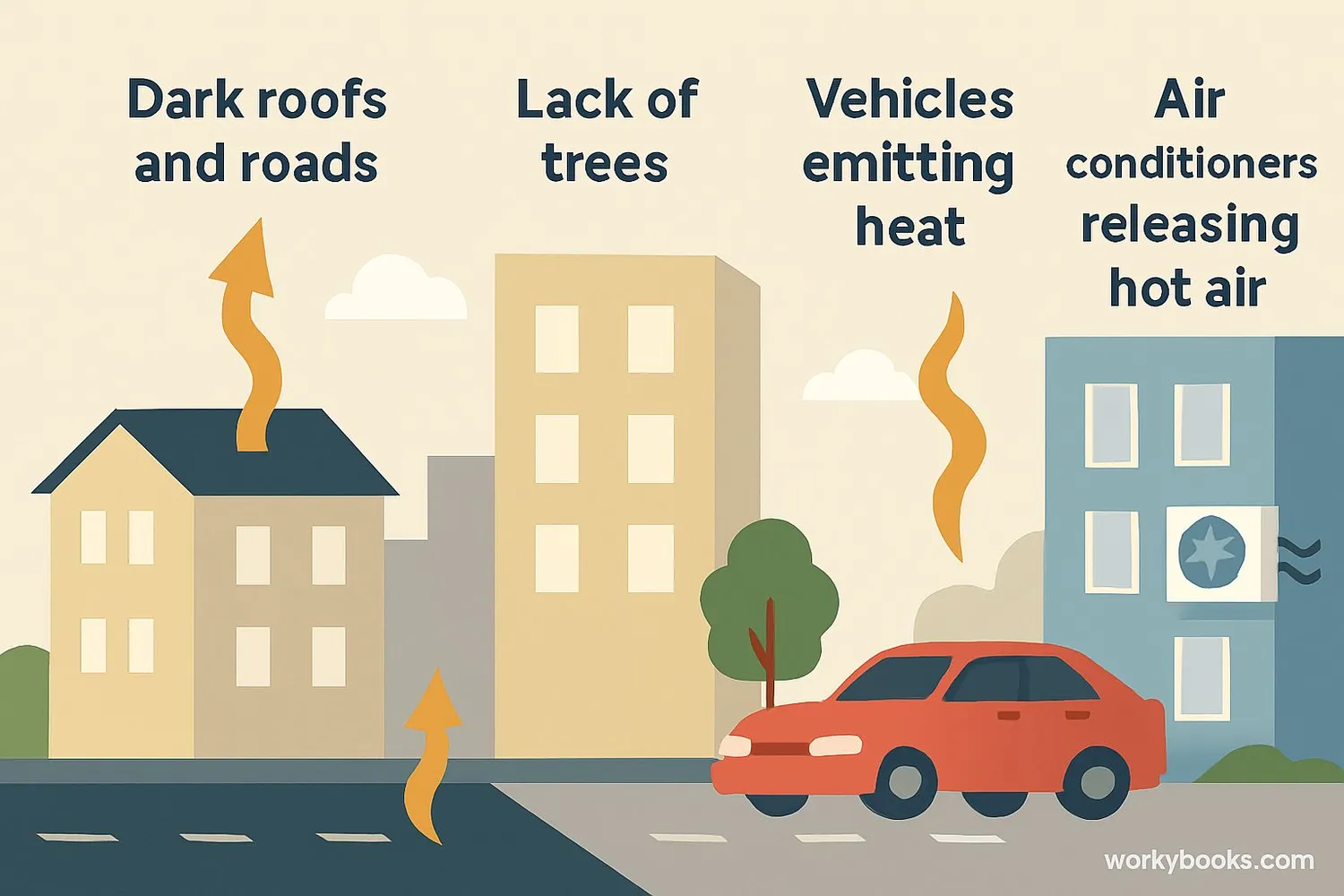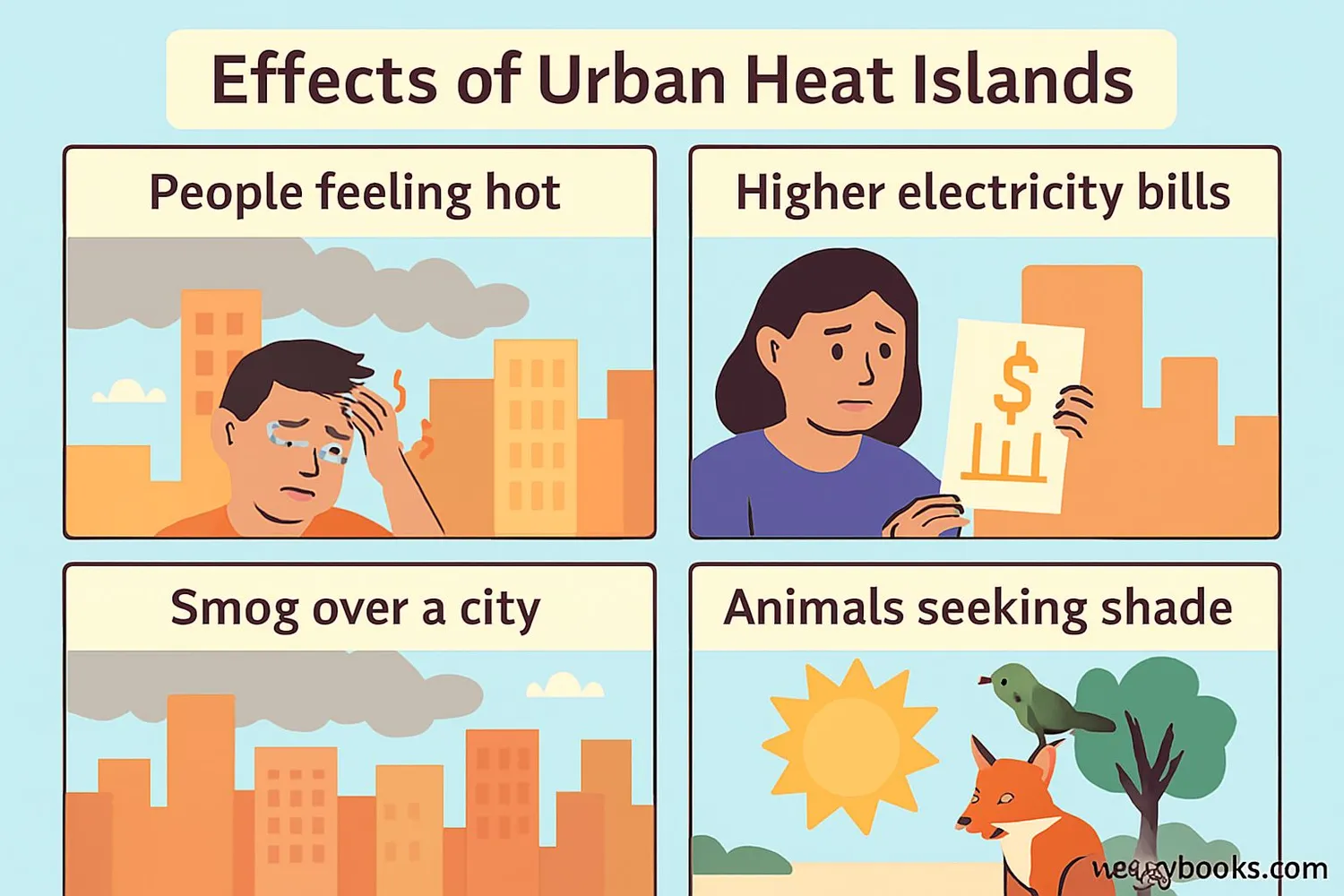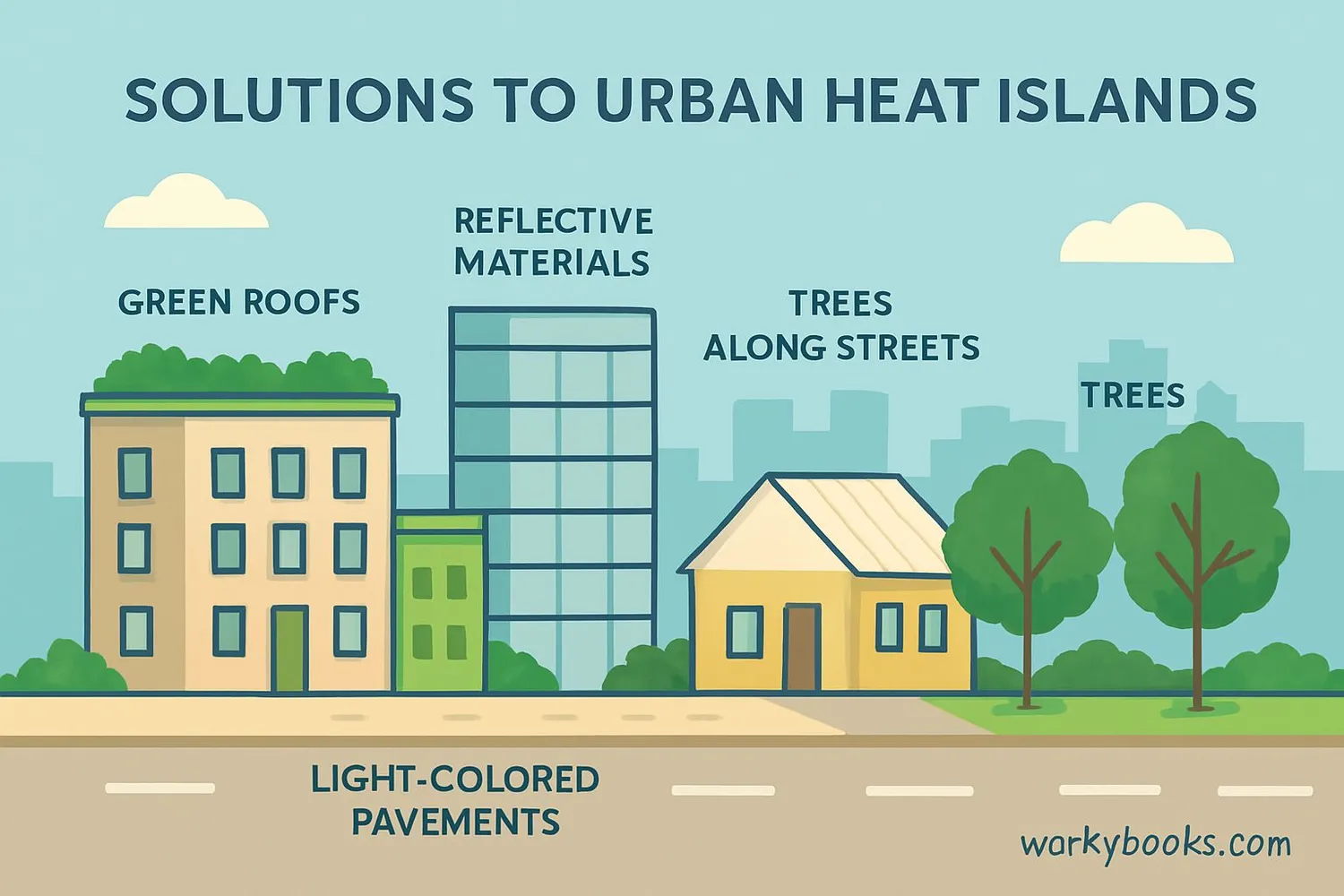Urban Heat Island - Definition, Examples, Quiz, FAQ, Trivia
Discover why cities are hotter than surrounding areas and how we can cool them down
What is Urban Heat Island?

An urban heat island (UHI) is when cities are much warmer than the countryside around them. Just like an island in the ocean stands out from the water, a city stands out as a "heat island" compared to cooler surrounding areas.
This happens because cities have lots of buildings, roads, and parking lots made from materials like concrete and asphalt that absorb and trap heat. These materials soak up sunlight during the day and slowly release it at night, keeping cities warmer.
Temperature Difference
Cities can be 1-7°F warmer during the day and up to 22°F warmer at night
Built Environment
Buildings and roads replace natural landscapes
Heat Absorption
Dark surfaces absorb and trap heat from the sun
Did You Know?
New York City can be up to 7°F warmer than surrounding areas on a summer afternoon!
Causes of Urban Heat Islands

Several factors combine to create urban heat islands:
Dark Surfaces
Dark roofs, roads, and parking lots absorb heat
Less Vegetation
Fewer trees and plants mean less shade and cooling
Waste Heat
Cars, factories, and air conditioners release heat
Building Materials
Concrete and asphalt store heat during the day
Urban geometry also plays a role. Tall buildings create "urban canyons" that trap heat and block cooling winds. The combination of these factors creates a dome of warm air over cities.
Effects of Urban Heat Islands

Urban heat islands cause several important effects:
Heat Stress
Higher temperatures can cause health problems
More Energy Use
Increased air conditioning use raises electricity bills
Air Pollution
Higher temperatures increase smog formation
Water Quality
Hot runoff can harm streams and aquatic life
Health Impact
During heat waves, urban heat islands can lead to more heat-related illnesses, especially for older people and those with health conditions.
Solutions for Urban Heat Islands

Cities are using creative solutions to cool down urban heat islands:
Green Roofs
Planting gardens on rooftops provides shade and cooling
Cool Pavements
Light-colored materials reflect sunlight instead of absorbing it
Urban Forests
Planting trees provides shade and cools the air
Green Spaces
Parks and green areas help cool surrounding neighborhoods
Cool roofs are another great solution. These are roofs painted with special reflective coatings that bounce sunlight back into space instead of absorbing it as heat. Some cities offer incentives to homeowners who install cool roofs!
Urban Heat Island Quiz
Test your knowledge about urban heat islands with this quiz!
Frequently Asked Questions
Here are answers to some common questions about urban heat islands:
Urban Heat Island Trivia
Discover some amazing facts about urban heat islands!
Record Temperatures
Phoenix, Arizona holds the record for the strongest urban heat island effect, with temperatures up to 15°F warmer at night than surrounding desert areas.
Energy Impact
For every 1°F increase in temperature, electricity demand for cooling increases by 1.5-2.0%, costing Americans billions of dollars each year.
Cool Solutions
A cool roof can stay up to 50°F cooler than a traditional dark roof, significantly reducing building temperatures and cooling costs.
Health Effects
During extreme heat events, urban heat islands can cause up to 10% more heat-related deaths compared to cooler rural areas.





